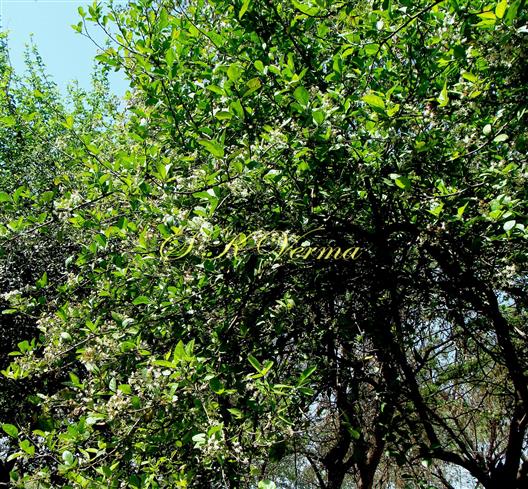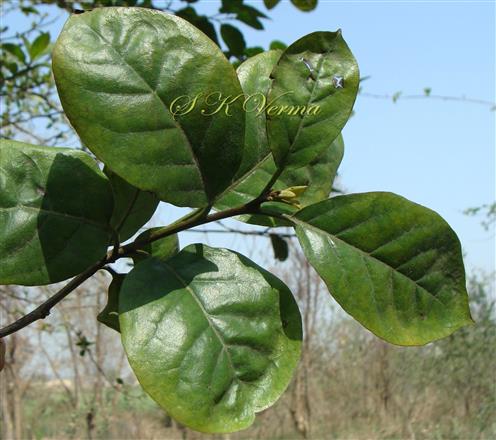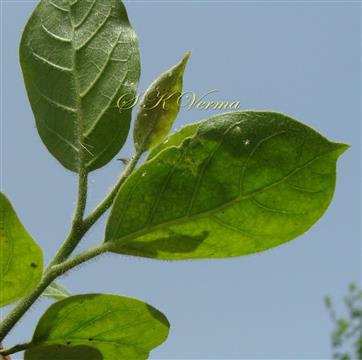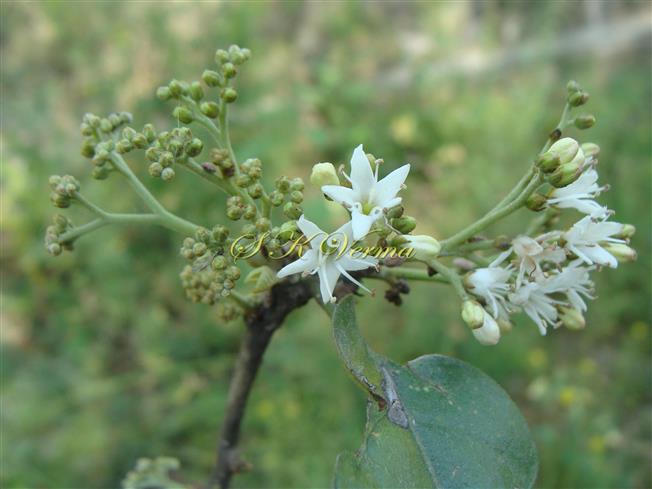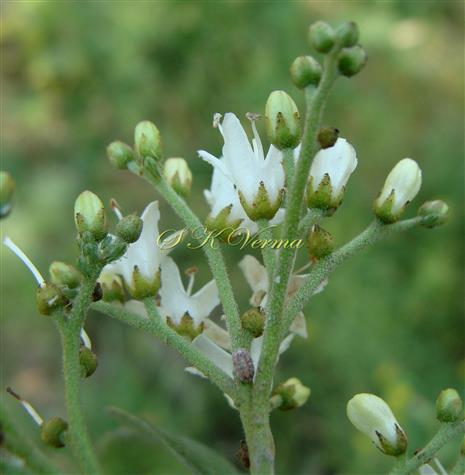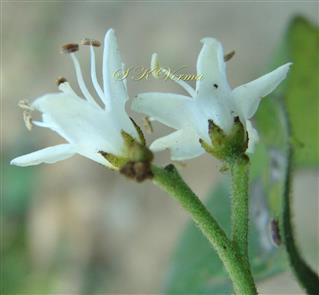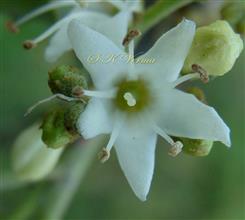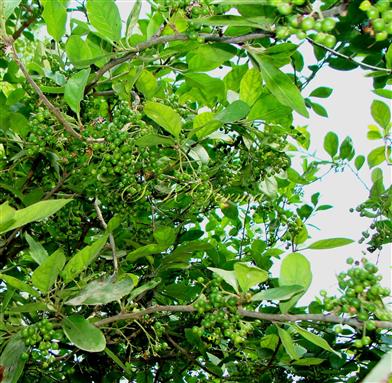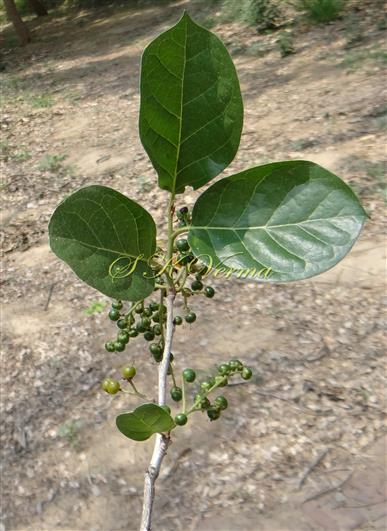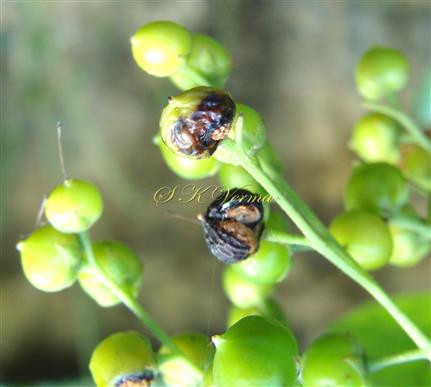EHRETIA
Ehretia
P. Browne, Civ. Nat. Hist. Jamaica. 168, Pl. 16, f.1. 1756; Parker, For. Fl. Punj. ed. 1: 358. 1918 (Reprint 1973); Hook. f., Fl. Brit. Ind. 4: 141. 1885; Fl. China @ eFloras.org 16: 333; Nasir, Fl. Pak. @ eFloras.org p. 14.
Trees or shrubs. Leaves simple, alternate, mostly petiolate, lamina margin entire or serrate, pinnately-veined. Flowers small, bracteate, bisexual, actinomorphic, pedicellate to subsessile, usually white, in terminal and axillary corymbose cymes or panicles, rarely solitary. Calyx 5, campanulate, 5-partite, tube short, ciliate, glabrous inside. Corolla funnelform, campanulate or subrotate, small; limb 5-lobed, lobes spreading or reflexed; tube short. Stamens exserted; anthers linear or broadly oblong, bithecous, dehiscence by longitudinal slits. Ovary 4- or 2-locular, each loculus in latter case incompletely divided, ovules 4; style terminal, 2-fid or 2- partite; stigmas 2, capitate or clavate. Fruit a small drupe, subglobose, endocarp hard, consisting of one 4-celled or two 2-celled or four 1-celled pyrenes.
65 species
Ehretia aspera
Ehretia aspera
Willd., Phytographia 1: 4. 1794; Ehretia laevis Roxb., Fl. Coromandel. 1: 42, t. 56. 1975; Fl. Ind. ed. 2, 2: 341. 1824; Clarke in Hook. f., Fl. Brit. Ind. 4: 141. 1885; Brandis, For. Fl. N. W. & C. Ind. 340. 1874; Brandis, Ind. Trees, 481. 1908; Bamber, Pl. Punj. 34. 1916; Kashyap, Fl. Lahore 62: 1936; Parker, For. Fl. Punj. ed. 1: 360. 1918 (Reprint 1973); Fl. China @ eFloras.org 16: 333; Nasir, Fl. Pak. @ eFloras.org p. 16; E. floribunda Benth. in Royale, Illustr. Bot. Himal. Mount. 1: 306. 1839; E. laevis var. floribunda (Benth.) Brandis, For. Fl. Ind. 340. 1974; Clarke in Hook. f., Fl. Brit. Ind. 4: 142. 1885.
A small deciduous tree; bark grey-brown with elliptic lenticels; branchlets brown, densely pubescent. Leaves alternate; petiole 1-2 cm long, pubescent or subglabrous; leaf blade ovate- elliptic to obovate, 6-12 cm x 5-8 cm, apex obtuse, acute or apiculate, pubescent when young, especially on undersurface, but becoming glabrescent when mature, base rounded, but broadly cuneate or oblique, margin entire. Flowers ebracteate, 7-8 mm long and across, white, bisexual, actinomorphic, hypogynous, in much-branched corymbose axillary and terminal cymes, sparsely dichotomously branched, 5-6 cm wide, densely yellow-brown pubescent. Calyx ca. 2 mm long, campanulate, lobes 5, 1+ mm long, triangular or ovate, acute, minutely rusty-tomentose; tube short. Corolla white, ca. 5 mm long, subrotate; lobes oblong or ovate-lanceolate; tube shorter than corolla lobes. Stamens 5, inserted in corolla tube, ca. 0.5 mm above base; filaments ca. 3 mm long, subulate, glabrous; anthers elliptic, 1.5 mm long, dorsifixed, dehiscence by longitudinal slits. Ovary 2 mm long, ovoid; style 2-3 mm long, bifid; stigmas 2, capitate. Drupes yellow or orange, 3-4 mm in diameter, depressed globose, somewhat 4-lobed, endocarp wrinkled, divided at maturity into four 1-seeded pyrenes.
Common Names: Chamror; Datranga, Tamoriya (Hindi)
